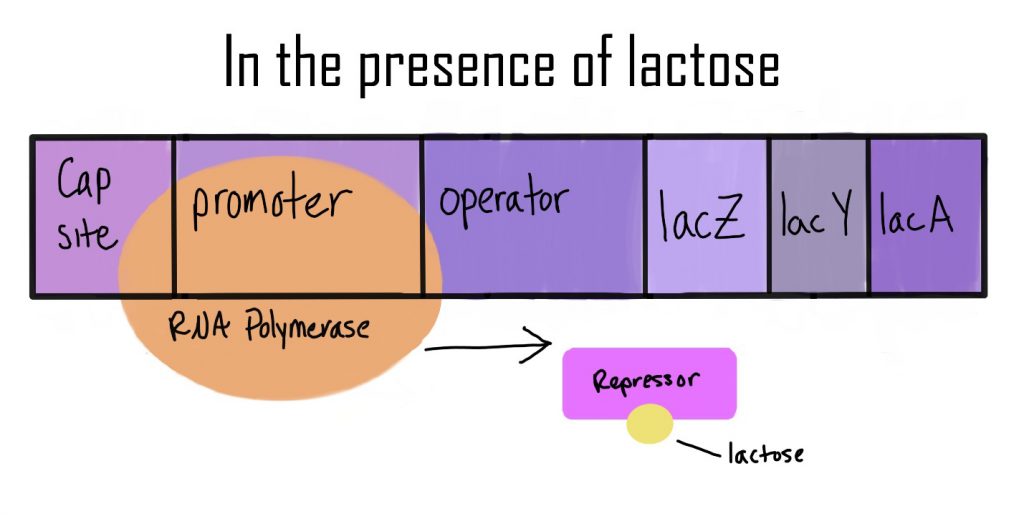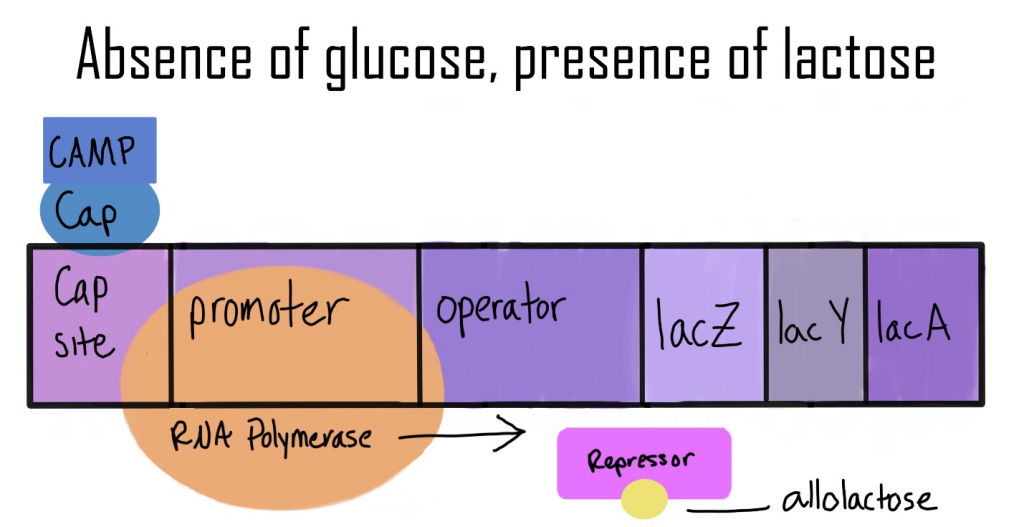Draw and describe the regulation of the Lac Operon in the following situations.

With lactose absent, the repressor binds to the operator and blocks the RNA polymerase from binding to the promoter and prevents transcription.

When lactose is present, the lactose binds to the repressor, releasing it from the operator. The RNA polymerase is able to bind to the promoter and allow transcription to begin.

The catabolic activator protein (CAP) binds to the CAP site before the promoter. Cyclic AMP (cAMP) binds to the CAP to signal low glucose levels, or “hunger.” When glucose is absent, the cAMP levels are high and keeps the CAP active.

In the absence of glucose, the CAP site will be active. When lactose is present while glucose is absent, the active CAP allows the RNA polymerase to attach to the promoter and for the repressor to release from the operator to allow transcription. This regulation affects the transcription and translation phases and controls whether the lac Z, Y, and A genes will be expressed. This is a key function for glycolysis since glucose and lactose can
both be used as an energy source.